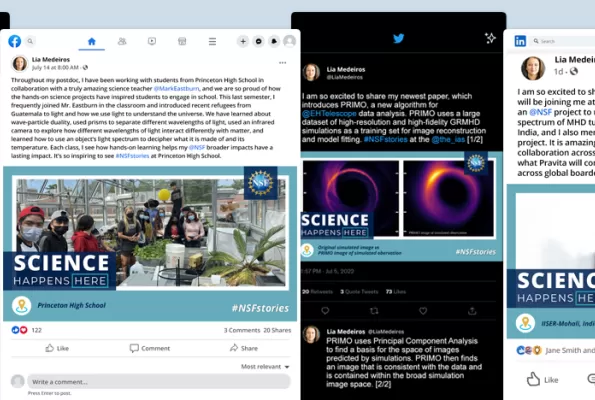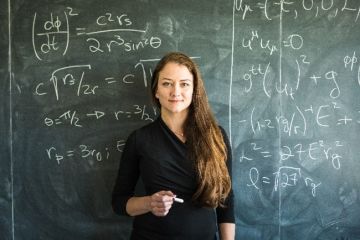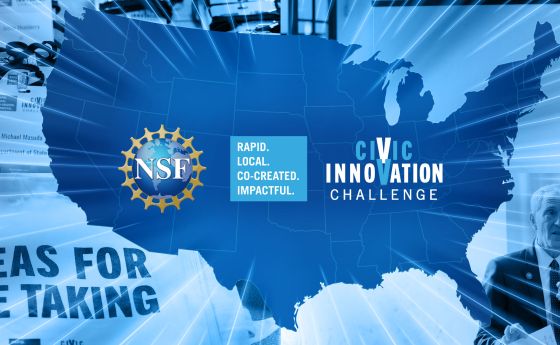
'Science Happens Here' – share your NSF-powered stories
Science happens all over the country and around the world, from big research vessels and telescopes to small labs and classrooms. With the launch of our “Science Happens Here” campaign, NSF is inviting YOU – our community – to join us in sharing stories of amazing science, engineering, innovation, STEM education, cutting-edge research facilities, future workforce and more that are powered by NSF.
Want to be part of the fun? Share your stories with us by accessing our toolkit for ways to participate on social media, easy-to-use templates and examples for inspiration.
We also encourage sharing your research by submitting photos and videos from any location – an NSF facility or instrument, your institution, innovation within your community, school science classes – anywhere and everywhere!
We will amplify your stories on our platforms, and together we will show the impact of partnerships across all sectors to create new knowledge, drive innovation and empower U.S. STEM talent.
- Step 1: Take a photo or short video of the research innovation or STEM fun you want to share.
- Step 2: Add your photo or video to our Instagram filter, customizable graphic or by simply posting.
- Step 3: Include a few sentences about the science happening in your location, adding #NSFstories, and tag NSF.
Questions? Reach out to sciencehappenshere@nsf.gov.
Here are examples from Lia Medeiros, an NSF astronomy and astrophysics fellow at the Institute for Advanced Study in Princeton, N.J., on how to use the toolkit to share your stories on social media, with content and what the post would look like once it is posted.
Even after all these years, I am still entranced by this simulation of plasma swirling around a black hole. Blue corresponds to 1.3 mm wavelength emission (the wavelength the @EHTelescope observes at), green to .8 mm (the wavelength we will observe soon), and red to a longer radio wavelength. This simulation was run on supercomputers funded by @NSFgov and the animation
was created on my laptop in my living room. Amazing to see how #NSFstories happen right in my own home in Princeton NJ.
I am so excited to share my newest paper, which introduces PRIMO, a new algorithm for @EHTelescope data analysis. PRIMO uses a large dataset of high-resolution and high-fidelity GRMHD simulations as a training set for image reconstruction and model fitting. at the @the_ias [1/2]
PRIMO uses Principal Component Analysis to find a basis for the space of images predicted by simulations. PRIMO then finds an image that is consistent with the data and is contained within the broad simulation image space. #NSFstories [2/2]
Throughout my postdoc, I have been working with students from Princeton High School in collaboration with a truly amazing science teacher @MarkEastburn, and we are so proud of how the hands-on science projects have inspired students to engage in school. This last semester, I frequently joined Mr. Eastburn in the classroom and introduced recent refugees from Guatemala to light and how we use light to understand the universe. We have learned about wave-particle duality, used prisms to separate different wavelengths of light, used an infrared camera to explore how different wavelengths of light interact differently with matter, and learned how to use an object’s light spectrum to decipher what it is made of and its temperature. Each class, I see how hands-on learning helps my @NSF broader impacts have a lasting impact. It’s so inspiring to see #NSFstories at Princeton High School.
I am so excited to share that my master’s student @Pravita_Hallur will be joining me at @The_IAS starting July 15th to work with me on an @NSF project to use GRMHD simulations to understand the spectrum of MHD turbulence. Pravita is a student at @IISERMohali in India, and I also mentored her for an undergraduate research project. It is amazing to see how science can progress through collaboration across the globe, and I couldn’t be more excited to see what Pravita will come up with next. #NSFstories at @the_IAS and across global boarders.






